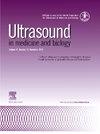肝细胞癌成像过程中肝脏特异性超声造影剂的临床实用性。
IF 2.4
3区 医学
Q2 ACOUSTICS
引用次数: 0
摘要
肝细胞癌(HCC)是最常见的肝脏恶性肿瘤,在全球范围内具有很高的死亡率。通过临床生物标志物、医学成像和组织学评估进行早期检测,然后进行快速干预,对于患者的积极结果是不可或缺的。虽然对比增强计算机断层扫描和磁共振成像在国际指南中被认为是HCC诊断和分期的参考标准,但超声(US)检查被推荐作为有风险患者的筛查工具。对比增强超声(CEUS)提高了使用超声造影剂(UCAs)进行超声检查的标准,能够高效诊断局灶性肝脏病变。大多数uca纯粹是血管内的,为临床医生提供病变动脉期血管动力学的动态表示,这在计算机断层扫描或磁共振成像评估中很少能看到如此详细的信息。尽管超声造影有诸多好处,但国际社会对超声造影在HCC临床路径中的作用存在不一致。纯血池试剂的短暂性不足以证明超声造影作为主要方式的合理性,因为超声造影无法持续地进行全肝成像,而且其区分HCC和肝内胆管癌的能力也存在争议。除了显示动脉期和门静脉期病变血管动力学外,正弦期UCA还为临床医生提供了通过Kupffer细胞摄取进行全肝成像的机会。因此,本综述的目的是研究超声造影在HCC临床途径中的作用,并观察Kupffer细胞正弦期UCA如何通过多模态、多药物方法补充当代诊断技术。本文章由计算机程序翻译,如有差异,请以英文原文为准。
The Clinical Utility of Liver-Specific Ultrasound Contrast Agents During Hepatocellular Carcinoma Imaging
Hepatocellular carcinoma (HCC) is the most common form of hepatic malignancy, with high mortality rates recorded globally. Early detection through clinical biomarkers, medical imaging and histological assessment followed by rapid intervention are integral for positive patient outcomes.
Although contrast-enhanced computed tomography scans and magnetic resonance imaging are recognised as the reference standard for the diagnosis and staging of HCC in international guidelines, ultrasound (US) examination is recommended as a screening tool for patients at risk. Contrast-enhanced US (CEUS) elevates the standard of an US examination using US contrast agents (UCAs), capable of diagnosing focal liver lesions with high efficacy. Most UCAs are purely intravascular, offering clinicians a dynamic representation of a lesions’ arterial phase vascular kinetics, which is seldom seen in such detail during computed tomography or magnetic resonance imaging assessments. Despite its benefits, there is incongruity between international societies on the role of CEUS in the HCC clinical pathway. The transient nature of pure blood-pool agents is suggested to be insufficient to justify CEUS as a primary modality due to the inability to consistently perform whole liver imaging, alongside disputes regarding its capabilities to differentiate HCC from intrahepatic cholangiocarcinoma.
A sinusoidal phase UCA affords clinicians the opportunity to perform whole liver imaging through Kupffer cell uptake in addition to visualising lesion vascular kinetics in the arterial and portal venous phases. Therefore, the purpose of this review was to examine the role of CEUS in the HCC clinical pathway in its current practice and observe how a Kupffer cell sinusoidal phase UCA may supplement contemporary diagnostic techniques through a multi-modality, multi-agent approach.
求助全文
通过发布文献求助,成功后即可免费获取论文全文。
去求助
来源期刊
CiteScore
6.20
自引率
6.90%
发文量
325
审稿时长
70 days
期刊介绍:
Ultrasound in Medicine and Biology is the official journal of the World Federation for Ultrasound in Medicine and Biology. The journal publishes original contributions that demonstrate a novel application of an existing ultrasound technology in clinical diagnostic, interventional and therapeutic applications, new and improved clinical techniques, the physics, engineering and technology of ultrasound in medicine and biology, and the interactions between ultrasound and biological systems, including bioeffects. Papers that simply utilize standard diagnostic ultrasound as a measuring tool will be considered out of scope. Extended critical reviews of subjects of contemporary interest in the field are also published, in addition to occasional editorial articles, clinical and technical notes, book reviews, letters to the editor and a calendar of forthcoming meetings. It is the aim of the journal fully to meet the information and publication requirements of the clinicians, scientists, engineers and other professionals who constitute the biomedical ultrasonic community.

 求助内容:
求助内容: 应助结果提醒方式:
应助结果提醒方式:


